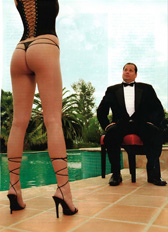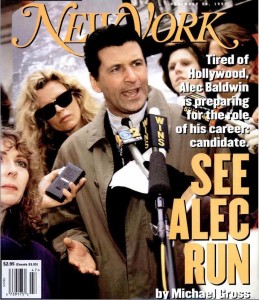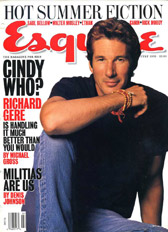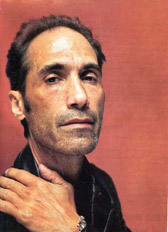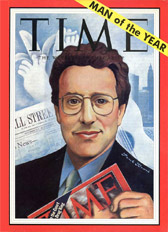
When I began researching Rogues Gallery, my “social” history of the leaders and benefactors of the Metropolitan Museum of Art, I discovered that although the institution celebrates the history of human creation, the Met’s keepers were profoundly anti-historical when it came to their own story. “If we say we won’t cooperate, will you go away?” was the first response of the Met’s chief flack who, ironically, moonlights writing history books himself.
Little did I know that another great American museum — The Smithsonian Institution — would not only agree with me, but would, when push came to shove, refuse to keep secrets for the Metropolitan. Last fall, it returned more than three dozen oral histories — some of which contain explosive revelations — to the Metropolitan after the New York museum refused to abide by a promise to release them.
It was 2006 when I first discovered the existence of the Metropolitan Museum Oral History Project — three-dozen-or-so taped and transcribed conversations with leaders of the museum, conducted under its auspices in the early 1990s and deposited in the Smithsonian’s Archives of American Art, which listed them all in its catalog. Among those interviewed for the project were Brooke Astor, Morgan heir Robert M. Pennoyer, the controversial curator Dietrich von Bothmer, former museum chairmen C. Douglas Dillon, William Macomber, J. Richardson Dilworth, and Arthur O. Sulzberger, and the current chairman James R. Houghton and president Emily Rafferty. But they were restricted. Permission to read them had to come from the interview subjects, and sent via the office of the museum’s archivist.
Hopefully, I called the Smithsonian and located the curators in charge of the archives. Could I get at them? No, they were under lock and key. What if I got an interview subject’s permission directly? No, they could only be released if that permission came via the museum. But a year later, there was a glimmer of hope. The museum’s contract with the museum specified, Joy Weiner, a reference specialist at the Smithsonian, wrote to me in spring 2007, that the access restriction was supposed to have been lifted late in 2005. “AAA’s Registrar, Susan Cary was assured by the Met that the release would be issued this year,” Weiner went on, but then came the bad news: “Ms. Cary has made several attempts to get the written release from the Museum’s archivist, but to date, the restriction on the oral interviews remains.”
I didn’t give up. In part that was because I’d gotten to see part of one of the interviews — Bothmer’s — and discovered they were no-holds-barred affairs. Bothmer thought he had the right to let me read the copy that had been delivered to him by the museum’s chief lawyer, Ashton Hawkins. “We want to leave it up to you to decide whether to restrict access to the interview during your lifetime,” Hawkins wrote in a cover letter. But what Bothmer wanted didn’t matter to Hawkins’ successor. On learning that I was in Bothmer’s office reading his oral history, she promptly had it taken away and turned up personally to ensure I left the museum immediately and never got to finish it.
So that summer, I renewed my effort to get at more of them, and again there was a glimmer of hope. “We’ve heard from the Met and it does seem that they’re making some progress in the paperwork on their end and so I’m hopeful that we’ll soon be able to provide access to the oral histories that are due to be released,” Marisa Bourgoin, the Richard Manoogian Chief of Reference Services at the Archives of American Art, told me in an e-mail. “Please do continue to check in and know that we’re working on it!”
When, I wondered, should I ask again? “My understanding is that the Met is trying to resolve its issues this week (and we’re putting some gentle pressure on them to do so),” Bourgoin replied “Given some administrative requirements on this end, it might be best if you were back in touch with us in a couple of weeks. ”
A month later, I spoke to Weiner again and learned the Met was taking a bit longer than expected. She and Bourgoin both made it clear they found the situation less than acceptable — but there was nothing they could do. Without that letter from the museum, the 2005 release date was meaningless.
Though I never forgot that the treasure trove was there, just out of reach, at that point, I gave up on getting them through channels. I’d already started asking others who were interviewed to read them. I started with Arthur Ochs “Punch” Sulzberger, former chairman of both the museum and the New York Times. I’d once worked for him at the Times and figured he, of all people, would appreciate why I was asking to read his. Perhaps he did, but he still refused to let me see it. He’d promised his “friends at the museum” that he wouldn’t, the man who published the Pentagon Papers said. I was disappointed but not entirely surprised. I’d discovered while researching the book that Punch’s father, the first Sulzberger to serve on the museum’s board, had been put there in order to blunt the paper’s coverage of the museum — “another fellow who goes along,” in the words of the Met’s then-landlord New York’s commissioner of parks, Robert Moses.
Others proved more willing. The son of the late Arthur Rosenblatt, who’d been a vice-Director of the museum under Tom Hoving and Philippe de Montebello, gave me a copy of his. The daughter of James Rorimer, Hoving’s predecessor at the museum, read me page after page of another conducted with her mother, Kay, who’d worked in the museum’s library before becoming its first lady. Kay Rorimer’s was personal and unrevealing compared to letters of hers I found through other sources. But Rosenblatt’s was explosive, scathing, and I quoted from it liberally in the book, which was published in hardcover last May. The story of the book’s reception — which was itself revealing — is told in a new afterword to the paperback, out next week. So, briefly, is the story of the surprising conclusion to what I’ve come to think of as Oral-gate.
Last fall, while writing that afterword, I called the Smithsonian again. Hope springs eternal, I guess. I learned, to my surprise, that the Oral Histories were no longer there. They had been, to use the museum term-of-art, de-accessioned and returned to the Metropolitan. Why? The Washington historical museum decided that it no longer wanted to house a cache of historical documents if, as the New York art museum insisted, they were to remain “under lock and key,” unavailable to legitimate researchers, Bourgoin said. “After a long conversation, we came to an understanding that they were in a better position to manage the restrictions than we were. It was untenable for us.” But Bourgoin also said that the Met had promised to begin releasing them, and a few days later, I got an email from her reporting that James Moske, a new Met archivist, had just told her that seven of them had been unlocked. Thrilled to hear that, though dreading the task of updating my book further, I called Moske. No, he said, they weren’t open yet. Then, last week, wondering if perhaps they were closed only to me, I induced a reporter to try to get at them. No, she was told, they were still unavailable. But they would be opened, the museum said. “Soon.” Based on that promise, her editor told her this was no story.
The next morning, I sent the reporter an email. “So, to recap,” I wrote, “The Met commissioned oral histories, locked them up at the Smithsonian for 15 years, refused to release them as the contract stipulated and the Smithsonian returned them, essentially in disgust. They told the Smithsonian they had begun releasing them, but in fact they had not and months later, still have not released them. But they promise to do so. Eventually. Really. Do I have that right?”
With all due respect to that editor, I still think it’s a story worth telling.
Originally published by The Huffington Post on May 5, 2010

